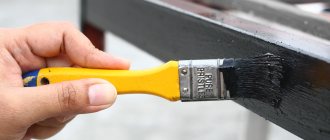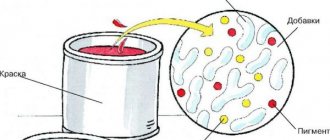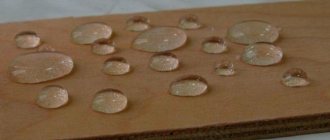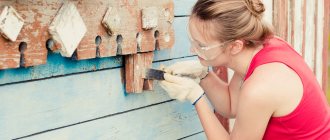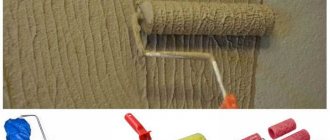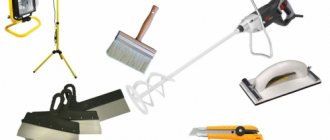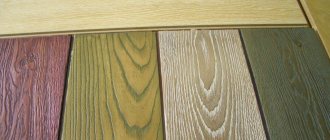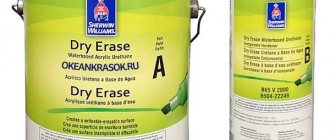Metal is used to make a variety of parts. This is a reliable material, but it is not resistant to a number of environmental factors. Therefore, in order to create a decorative coating, as well as obtain additional protective functions, they often resort to painting the metal. The final result will depend on the choice of product and the correct execution of the dyeing technique. Next we will talk in detail about how to paint metal so that the coating does not peel off.
The essence and features of the method
The first paints for metal surfaces performed only the function of changing color. Such products could not stay on the material for a long time, for this reason, manufacturers decided to produce substances that, in addition to painting, serve as protection against the formation of rust and other negative factors affecting the strength of the coating.
Today, the market offers a wide range of coloring agents that can cope with these needs. There are different methods for painting iron; rollers, brushes, and a spray gun can be used.
Today, the market offers a wide range of coloring agents that can cope with these needs.
Is it possible to paint metal?
Metal painting can be chosen as a treatment only if you know for sure whether it can be used. Often metal materials are made from black iron, its surface is not protected from the effects of liquids, for this reason, over time, water leads to corrosive formations. There are specialized anti-rust products on sale, as well as paints.
Galvanization has already received protection from these influences, but you can extend the shelf life of the material by additionally painting it.
Metal painting can be chosen as its treatment.
What it is?
Metal painting is needed primarily to protect the product from the negative influence of the environment and daily mechanical stress during operation; secondarily, coloring is used to give the metal the necessary aesthetic characteristics. Building structures, supports, tanks, service structures, such as stairs, are processed.
Sometimes galvanizing is used instead of painting.
In this article we will talk about methods of painting metals, their features and advantages.
How to calculate paint consumption
Before painting a metal product, you need to calculate the amount required for the job. The manufacturer always writes the average product consumption on the packaging of the product. The indicator may vary somewhat; it is influenced by the application tool, surface structure, coloring agent, and the presence of complex elements on the object.
The manufacturer always writes the average product consumption on the packaging of the product.
Metal painting technology
The technological process is divided into several successive stages, which allows you to achieve the best results.
Tools and materials
First of all, you need to prepare the necessary tools and materials:
- Coloring composition.
- When processing sheet products manually, a roller is used; for complex or hard-to-reach areas, brushes are used; when using a mechanized method, a spray gun is used. If you need to paint a large area, it is very difficult to do it with hand tools. But you need to take into account that only a composition of a certain viscosity can be applied well with a spray bottle.
- Primer mixture. When working with a regular base, a simple metal solution will do. If the product is made of non-ferrous materials, then the appropriate primer is selected. If rust is present, a converting primer will be required. Its peculiarity is that it interacts with the damaged structure and turns it into a protective layer.
- Separate container for paint. This can be a roller or brush container to make the process easier.
Tools and materials for painting
Attention! Be sure to read the instructions provided by each manufacturer. Particular attention is paid to the conditions for performing work. So, the minimum permissible temperature is +5 degrees with a humidity not higher than 80%!
Preparing metal surfaces for painting
This process requires a responsible approach; any shortcomings will be noticeable. Correcting problems that arise due to poor preparation is extremely difficult, and sometimes impossible.
Algorithm of actions:
- The base is cleaned of dust and dirt, the remnants of the old decorative layer are completely removed. When working with metal, it is better to avoid applying new paint to old paint, even if they match.
- An important step is degreasing, which improves adhesion. When working outdoors, it is necessary to protect the surface from dirt. The first wash is carried out using a solvent or white spirit: the entire area is treated, special attention is paid to hard-to-reach places. The next wash is done with a warm soapy solution, which is then thoroughly removed with plain water. The result should be a clean and dry coating.
Degreasing occurs sequentially: stage 1 - use of a special degreaser, 2 - soapy water, 3 - plain water
- If there are defects (cracks and depressions) that spoil the appearance, puttying is carried out. All treated areas are pre-treated with anti-corrosion compounds. The putty is applied selectively, exclusively to the desired areas. The mixture is carefully distributed and leveled, and after drying it is sanded. The result should be a single plane without traces of repair.
- If rust is present, it is removed; in case of severe damage, a converter is used. It is applied to a surface that has been cleaned of major traces of corrosion. Due to phosphoric acid, a reaction occurs during which a protective film is formed.
- Minor damage can be removed by sanding and stripping. The need to use a primer depends on the type of paint chosen and the type of coating. For example, galvanized steel should not be primed.
The preparation of the metal surface can be considered complete after all actions have been completed and the base has dried.
How to paint metal products correctly
Painting methods depend on the tools; a combination of devices is allowed.
Roller painting
The roller is convenient to work on large and flat surfaces. The technology is as follows:
- The composition is pre-diluted, and a suitable substance is selected as a solvent. This procedure is necessary for easier distribution.
- The paint is poured into a convenient container. The roller should be immersed with its wide part, and not sideways. The tool must be extremely reliable and not leave lint behind.
- The process begins with the selected area. It is better to move from one edge to the other, this will avoid visible transitions.
- The moistened tool is placed on the surface, after which rolling begins. The first movements go in the vertical direction: from bottom to top and back. An area two or three times the width of the roller is immediately grabbed. The pressure should be minimal and gradually increase.
- After the composition is transferred to the surface, the movements change to horizontal.
A roller is an affordable and quick way to paint, but this tool is more suitable for straight and even surfaces
The key to successful work is the systematic distribution of the material without too thick areas. The number of layers applied varies from 2 to 4.
Important! Each subsequent layer is applied only after the previous one has thoroughly dried. At the same time, artificial acceleration of the process is prohibited.
Painting with a brush
This is a rather monotonous task, which is carried out on complex or embossed parts of the product.
The brush is ideal for hard-to-reach places and small areas to be painted.
If the mixture is too viscous, then dilute it a little. You don’t need to dip the bristles completely, but 1/3 of the way, this will avoid drips; shake off the excess by tapping on the edge of the container. Movements must be unidirectional. The paint is applied to the coating with the first strokes, and rubbed with subsequent strokes. The number of layers applied depends on the type of surface.
Complex structures are painted with thin brushes, using a minimal amount of solution. This will prevent the appearance of frozen drops.
Using a spray gun
Since the absorption of metal is not very high, using a spray bottle requires experience. If not, you need to practice.
Applying paint using a spray gun
Recommendations for work are as follows:
- Spraying occurs without stopping. The first movements should be smooth and slow. The layer is laid parallel.
- After the initial coating, the process speeds up, treating the same area in different directions. It is important to maintain the same distance.
This device makes DIY work much easier. With some skill, even difficult areas can be painted.
On a note! If you want to get a surface with an antique effect, then you resort to various methods. Bronze staining and glazing are considered the simplest.
Advantages and disadvantages of the method
Painting metal surfaces has both positive and negative sides. The choice to paint a material or not should be made based on knowledge of them. The advantages are noted:
- The coating takes on the selected color. There are many options, from standard colors, to gold, bronze, silver, etc.;
- Availability of the method, no need to purchase many tools and materials;
- Easy to carry out, no special skills required;
- Get additional protection. This is especially important for items located outdoors; in winter and summer they are exposed to different weather conditions.
The disadvantages include the following points:
- Most paints emit a pungent odor that lingers in the room for a long time;
- The powder method can only be carried out using special equipment;
- Not all colorants can provide anti-corrosion protection, which should be taken into account when choosing.
Almost all shortcomings can be eliminated if you choose a quality product.
Painting metal surfaces has both positive and negative sides.
Types of metal painting
Metal can be painted in different ways:
- a paint brush for metal, which is suitable for processing products with a flat surface and small sizes,
- roller - for large-sized products with a flat surface,
- by dipping into paint, which works especially effectively with small parts of complex shapes,
- air and airless spraying from a special apparatus; this method is used if you need to paint large products of arbitrary shapes.
Separately, powder coating is distinguished - painting with powder with a polymer structure and subsequent polymerization of the coating, which makes the product resistant to temperature changes, mechanical damage, and rust. Powder dye is suitable for almost all types of mechanical surfaces, it is relatively easy to apply with a spray gun, and therefore is very popular in industry, the automotive industry, etc.
Preparatory activities
To obtain the desired result, the painting process must be carried out with surface preparation. And also the choice of paint should be done with special attention. The combination of carefully performing all stages will help you get an excellent result with your own hands.
To obtain the desired result, the painting process must be carried out with surface preparation.
Paint selection
Before painting metal, it is necessary to analyze what functions the painting will have to perform, in what conditions the item will be used, and the type of product: fence, car, doors or other items. Then it will be easier to choose a coloring composition, and the result will be good.
Popular and common compositions suitable for painting have been described above. Here we will talk about the types that differ in obtaining special properties on the surface:
- If there is an area with rust, you can mix epoxy with chemical components, this will create a coating that delays the further spread of the lesion and a barrier against new formations;
- Hammer paints are a subtype of different paints. They are suitable for items used outdoors and create strong protection from external influences;
- Primer enamel is one product that includes the characteristics of a primer mixture and paint;
- Nitro paints are highly toxic, so they can only be used outdoors; they are produced exclusively in cans.
Hammer paints are suitable for items used outdoors and create durable protection from external influences.
Materials and tools
It is better not to interrupt painting; for this reason, make sure that all the necessary tools and materials are available in advance. You will need to prepare the following items:
- A primer solution that will suit the task at hand;
- Container for coloring composition;
- Roller, brush. The second is necessary for painting hard-to-reach places; a roller is more suitable for working with large products. You can choose a spray bottle.
It is better not to interrupt painting; for this reason, make sure that all the necessary tools and materials are available in advance.
Surface pre-treatment
To prevent painting from highlighting defects that were on the surface, you need to get rid of them. Therefore, a preparatory stage is carried out, including the following actions:
- All dirt is removed. If there is an old coating, it is better to eliminate it.
- A degreasing agent is applied, all areas should be treated, and the surface is washed again.
- After the base has dried, a putty mixture is applied to obtain a smooth base.
- Next, the rusty layer is removed, and a rust converter can be applied.
- Small flaws can be removed by sanding.
If there is an old coating, it is better to eliminate it.
How to paint iron
The most popular metal, divided into many types, is iron. Its cost is low, so this material is actively used in the manufacture of drainpipes, roof repair and covering, and other construction work. The interaction of metal with air is quite active, so the paint covering the iron should protect it from rust.
The best coatings for this case are oil or alkyd paints containing rust converters or additives with an anti-corrosion effect. If you use cheap paints, they are unlikely to be able to protect the iron from rust. In this case, you will have to use additional anti-corrosion compounds or thoroughly prepare the metal.
Coloring methods
Depending on the chosen application tool, the painting technique will vary. Following all the nuances will help you get an even coating.
Using a roller
The roller is used for large surface areas; it is leveled before the process, otherwise painting will highlight all the defects. Proceed as follows:
- The coloring solution is being prepared.
- It is better to use a special ditch for painting, into which the roller is immersed for paint impregnation.
- Start coloring from one edge, moving to the other.
- Movements are made from top to bottom.
- This way the entire surface is painted; it is advisable to apply two layers of paint, each one should dry before applying the next.
The roller is used for large surface areas; it is leveled before the process, otherwise painting will highlight all the defects.
An ordinary brush
The technology of painting metal surfaces with a brush is more complicated; it is better to immerse it halfway in the container with paint to avoid smudges. The first stroke applies the main composition, the rest serve to distribute it on the material. Each application should be done in the same direction as the previous one. How many layers will be made is determined visually.
Each application should be done in the same direction as the previous one.
Using a spray gun
The spray gun requires certain skills from the master, especially when it comes to metal that does not adhere well to compounds. Advice from professionals can help you cope with the task:
- Spraying is done at a time and evenly;
- They move slowly and smoothly;
- The distribution is done in parallel;
- The second layer can be applied in any direction.
The spray gun requires certain skills from the master, especially when it comes to metal that does not adhere well to compounds.
Application methods
To apply paint you can use:
- Paint brush. Suitable for painting small parts. You can find brushes of different sizes on sale. The bristles can be natural or synthetic. For access to hard-to-reach places, the tool is equipped with an elongated curved handle.
- Roller. Suitable for painting large flat surfaces.
- Sprayers. The second name for the spray gun. A compressor is used to operate them. The coloring composition is supplied under pressure. The equipment is used by large enterprises, car repair shops, carpentry, and blacksmith shops.
- Containers for dipping metal workpieces. This method makes it easy to paint parts with complex shapes.
Modern technology - powder coating of metal. The blanks are placed in a closed spray booth and covered with a layer of paint. Its particles receive a negative electrical charge and are attracted to the working surface, creating a dense, uniform layer. After applying the powder, the workpiece is placed in an oven so that the decorative layer bakes and becomes monolithic.
Paint brush (Photo: Instagram / rostov.kraski.kisti)
Recommendations and safety precautions
Safety measures during work are strictly observed. Otherwise, unexpected difficulties may arise. Follow the following rules:
- When working inside a building, it is first ventilated;
- If paint or thinner is spilled, sand is poured onto the stain to prevent a fire from starting;
- The master must wear a protective mask and gloves;
- You cannot eat indoors while painting;
- It is prohibited to pour paint into sewer pipes.
Safety measures during work are strictly observed.
Metal painting can be done at home, the main thing is to choose the right paint. Also act step by step to get a high-quality result that will last a long time. The article described how to paint metal correctly; following the recommendations will help you cope with painting.
